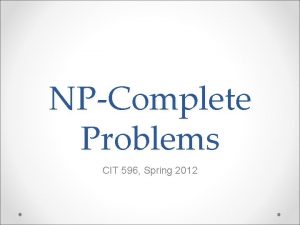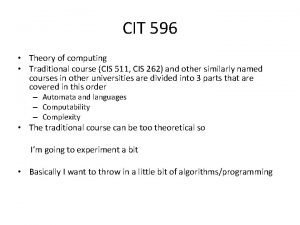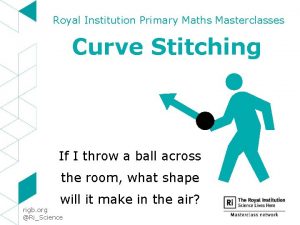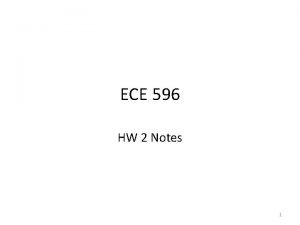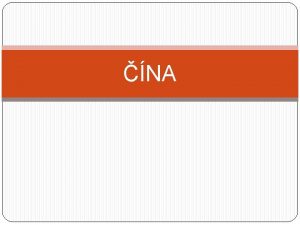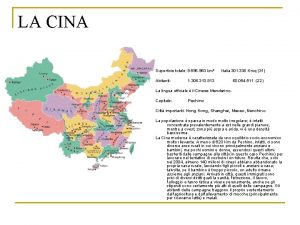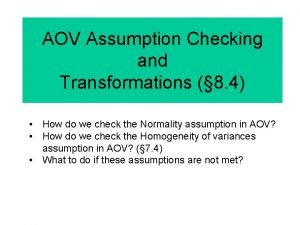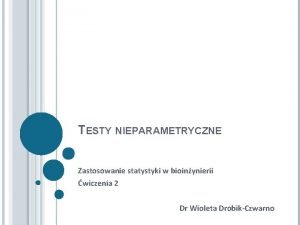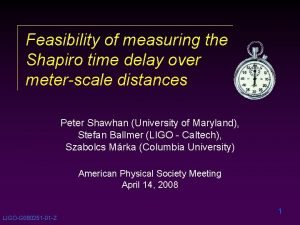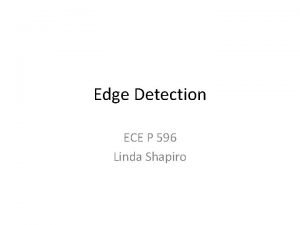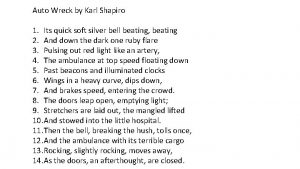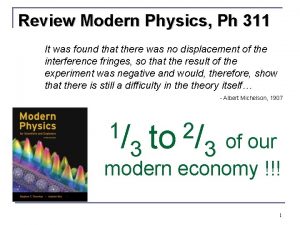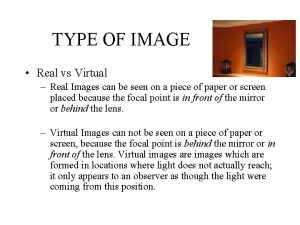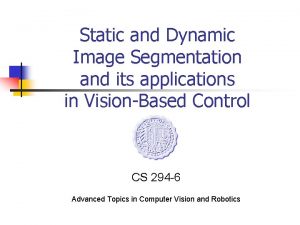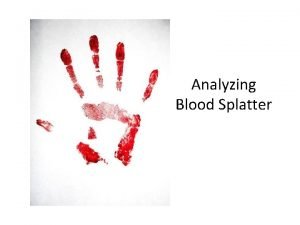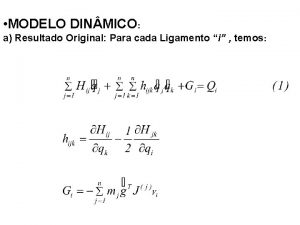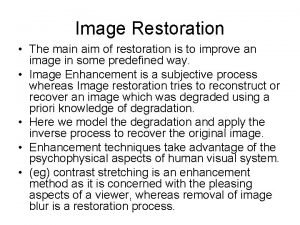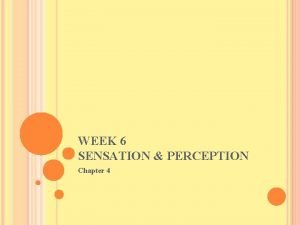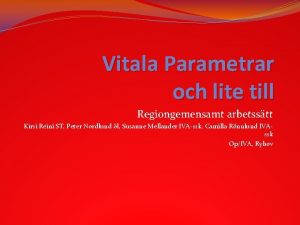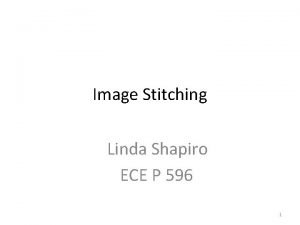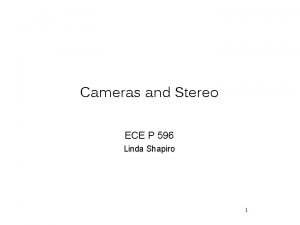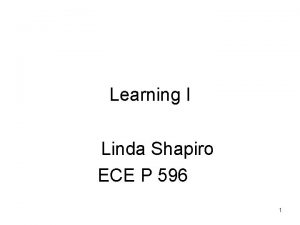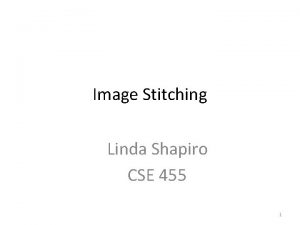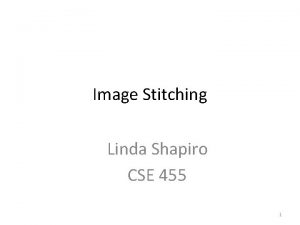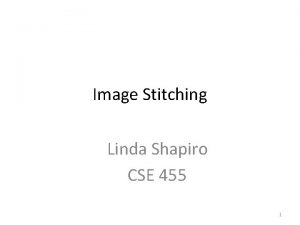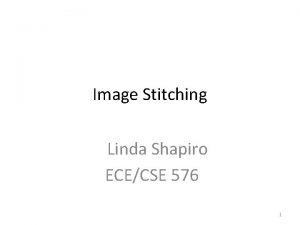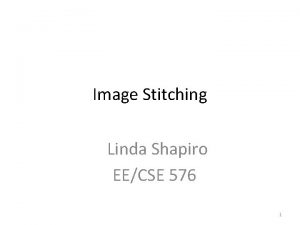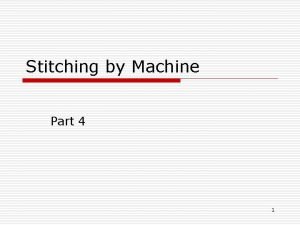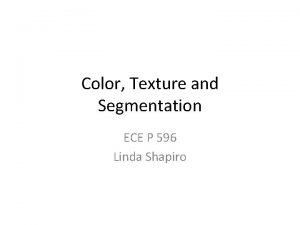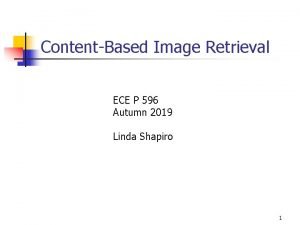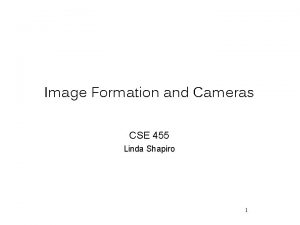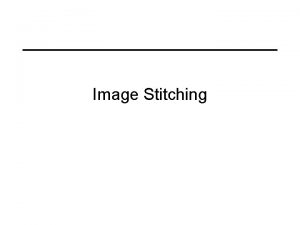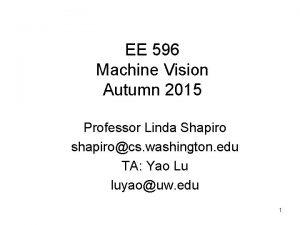Image Stitching Linda Shapiro ECE P 596 1


























































- Slides: 58

Image Stitching Linda Shapiro ECE P 596 1

• Combine two or more overlapping images to make one larger image Add example 2 Slide credit: Vaibhav Vaish

How to do it? • Basic Procedure 1. Take a sequence of images from the same position (Rotate the camera about its optical center) 2. Compute transformation between second image and first 3. Shift the second image to overlap with the first 4. Blend the two together to create a mosaic 5. If there are more images, repeat 3

1. Take a sequence of images from the same position • Rotate the camera about its optical center 4

2. Compute transformation between images • Extract interest points • Find Matches • Compute transformation ? 5

3. Shift the images to overlap 6

4. Blend the two together to create a mosaic 7

5. Repeat for all images 8

How to do it? • Basic Procedure ✓ 1. Take a sequence of images from the same position Rotate the camera about its optical center 2. Compute transformation between second image and first 3. Shift the second image to overlap with the first 4. Blend the two together to create a mosaic 5. If there are more images, repeat 9

Compute Transformations ✓ • Extract interest points ✓ • Find good matches • Compute transformation Let’s assume we are given a set of good matching interest points 10

Image reprojection mosaic PP • The mosaic has a natural interpretation in 3 D – The images are reprojected onto a common plane – The mosaic is formed on this plane 11

Example Camera Center 12

Image reprojection • Observation – Rather than thinking of this as a 3 D reprojection, think of it as a 2 D image warp from one image to another 13

Motion models • What happens when we take two images with a camera and try to align them? • translation? • rotation? • scale? • affine? • Perspective? 14

Recall: Projective transformations • (aka homographies) 15

Parametric (global) warping • Examples of parametric warps: aspect rotation translation affine perspective 16

2 D coordinate transformations • • • translation: x’ = x + t x = (x, y) rotation: x’ = R x + t similarity: x’ = s R x + t affine: x’ = A x + t perspective: x’ H x x = (x, y, 1) (x is a homogeneous coordinate) 17

Image Warping • Given a coordinate transform x’ = h(x) and a source image f(x), how do we compute a transformed image g(x’) = f(h(x))? h(x) x f(x) x’ g(x’) 18

Forward Warping • Send each pixel f(x) to its corresponding location x’ = h(x) in g(x’) • What if pixel lands “between” two pixels? h(x) x f(x) x’ g(x’) 19

Forward Warping • Send each pixel f(x) to its corresponding location x’ = h(x) in g(x’) • What if pixel lands “between” two pixels? • Answer: add “contribution” to several pixels, normalize later (splatting) h(x) x f(x) x’ g(x’) 20

Inverse Warping • Get each pixel g(x’) from its corresponding location x’ = h(x) in f(x) • What if pixel comes from “between” two pixels? h-1(x) x f(x) x’ g(x’) 21

Inverse Warping • Get each pixel g(x’) from its corresponding location x’ = h(x) in f(x) • What if pixel comes from “between” two pixels? • Answer: resample color value from interpolated source image h-1(x) x f(x) x’ g(x’) 22

Interpolation • Possible interpolation filters: – nearest neighbor – bilinear – bicubic (interpolating) 23

Bilinear Interpolation 24

Motion models Translation Affine Perspective 2 unknowns 6 unknowns 8 unknowns 25

Finding the transformation • • Translation Similarity = Affine = Homography = 2 degrees of freedom 4 degrees of freedom 6 degrees of freedom = 8 degrees of freedom • How many corresponding points do we need to solve? 26

Simple case: translations How do we solve for ? 28

Simple case: translations Displacement of match i = Mean displacement = 29

Example 9, 2 (2, 2) (1, 1) 8, 1) ((9 -2)+(8 -1))/2 , ((2 -2) +(1 -1)/2 = 7, 0 30

Simple case: translations • System of linear equations – What are the knowns? Unknowns? – How many unknowns? How many equations (per match)? 31

Simple case: translations • Problem: more equations than unknowns – “Overdetermined” system of equations – We will find the least squares solution 32

Least squares formulation • For each point • we define the residuals as 33

Least squares formulation • Goal: minimize sum of squared residuals • “Least squares” solution • For translations, is equal to mean displacement 34

Solving for translations • Using least squares 2 n x 2 2 x 1 2 n x 1 35

Least squares • Find t that minimizes • To solve, form the normal equations 36

Our Example A t 10 01 1010 0101 Transpose . 5 0 0. 5 Xt Yt 10 01 = b = 7 0 7 0 20 02 Inverse = = . 5 0 0. 5 1010 0101 = . 5 0 0. 5 7 0 37

Affine transformations • • How many unknowns? How many equations per match? x´ = ax + by + c; y´ = dx + ey +f How many matches do we need? 38

Affine transformations • Residuals: • Cost function: 39

Affine transformations • Matrix form 2 n x 6 6 x 1 2 n x 1 40

Solving for homographies Why is this now a variable and not just 1? • A homography is a projective object, in that it has no scale. It is represented by the above matrix, up to scale. • One way of fixing the scale is to set one of the coordinates to 1, though that choice is arbitrary. • But that’s what most people do and your assignment code does. 41

Solving for homographies Why the division? 42

Solving for homographies This is just for one pair of points. 43

Direct Linear Transforms (n points) 2 n × 9 9 2 n Defines a least squares problem: • Since is only defined up to scale, solve for unit vector • Solution: = eigenvector of with smallest eigenvalue • Works with 4 or more points 44

Direct Linear Transforms • Why could we not solve for the homography in exactly the same way we did for the affine transform, ie. 45

Answer from Sameer • For an affine transform, we have equations of the form Axi + b = yi, solvable by linear regression. • For the homography, the equation is of the form Hx i y i (homogeneous coordinates) and the means it holds only up to scale. The affine solution does not hold. 46

Matching features What do we do about the “bad” matches? 47

RAndom SAmple Consensus Select one match, count inliers 48

RAndom SAmple Consensus Select one match, count inliers 49

Least squares fit (from inliers) Find “average” translation vector 50

51

RANSAC for estimating homography • RANSAC loop: 1. Select four feature pairs (at random) 2. Compute homography H (exact) 3. Compute inliers where ||pi´, H pi|| < ε • Keep largest set of inliers • Re-compute least-squares H estimate using all of the inliers 52

Simple example: fit a line • Rather than homography H (8 numbers) fit y=ax+b (2 numbers a, b) to 2 D pairs 53 53

Simple example: fit a line • Pick 2 points • Fit line • Count inliers 3 inliers 54 54

Simple example: fit a line • Pick 2 points • Fit line • Count inliers 4 inliers 55 55

Simple example: fit a line • Pick 2 points • Fit line • Count inliers 9 inliers 56 56

Simple example: fit a line • Pick 2 points • Fit line • Count inliers 8 inliers 57 57

Simple example: fit a line • Use biggest set of inliers • Do least-square fit 58 58

Where are we? • Basic Procedure 1. Take a sequence of images from the same position (Rotate the camera about its optical center) 2. Compute transformation between second image and first 3. Shift the second image to overlap with the first 4. Blend the two together to create a mosaic 5. If there are more images, repeat 59
 Image alignment and stitching
Image alignment and stitching Panorama stitching
Panorama stitching Cit 596
Cit 596 Bird makes its nest among the thorns of cactus plant
Bird makes its nest among the thorns of cactus plant Cit596
Cit596 Curve stitching equation
Curve stitching equation Psl logs
Psl logs Hw-596
Hw-596 Panorama stitching algorithm
Panorama stitching algorithm 596
596 9 596 960
9 596 960 Nascondino cinese in cortile
Nascondino cinese in cortile Stitching graphics
Stitching graphics David shapiro natick
David shapiro natick Sheree shapiro
Sheree shapiro Shapiro
Shapiro Dr steven shapiro
Dr steven shapiro Test shapiro wilka
Test shapiro wilka Test shapiro wilka
Test shapiro wilka Roy d. shapiro
Roy d. shapiro Ben shapiro muscles
Ben shapiro muscles Shapiro time delay
Shapiro time delay Edge shapiro
Edge shapiro The quantum illumination story
The quantum illumination story Jo shapiro peer support
Jo shapiro peer support Duke blue paint
Duke blue paint The poem auto wreck
The poem auto wreck Shapiro
Shapiro Review of modern physics
Review of modern physics Dan shapiro usc
Dan shapiro usc Shapiro wilk teszt
Shapiro wilk teszt Multinational financial management definition
Multinational financial management definition Multinational financial management shapiro
Multinational financial management shapiro Real vs virtual images
Real vs virtual images Real image vs virtual image
Real image vs virtual image Image transform in digital image processing
Image transform in digital image processing Optimum notch filter in image processing
Optimum notch filter in image processing Arithmetic coding in digital image processing
Arithmetic coding in digital image processing Key stages in digital image processing
Key stages in digital image processing Analog image and digital image
Analog image and digital image Objective fidelity criteria
Objective fidelity criteria Image sharpening and restoration
Image sharpening and restoration Static image vs dynamic
Static image vs dynamic Image geometry in digital image processing
Image geometry in digital image processing Area of convergence
Area of convergence Isopreference curve
Isopreference curve Appuyez sur l’image qui est dans le bon sens
Appuyez sur l’image qui est dans le bon sens Physical image vs logical image
Physical image vs logical image Perturbação
Perturbação Cameraman.tif
Cameraman.tif Image transform in digital image processing
Image transform in digital image processing Imtransform matlab
Imtransform matlab Image restoration in digital image processing
Image restoration in digital image processing 余采樺
余采樺 Melody randford
Melody randford Dimitri and linda are trying to learn a new routine
Dimitri and linda are trying to learn a new routine Vitala parametrar
Vitala parametrar Linda kazmierczak
Linda kazmierczak Linda norhan
Linda norhan


